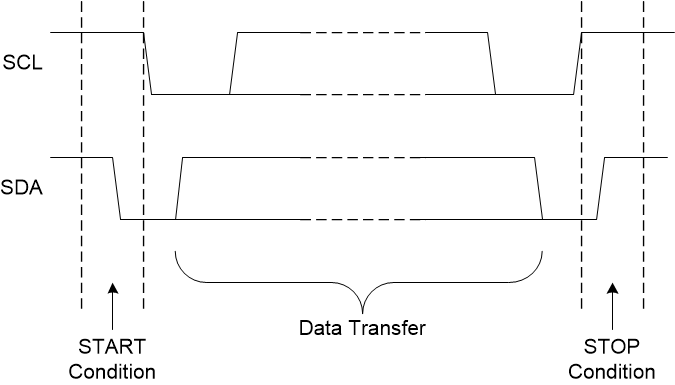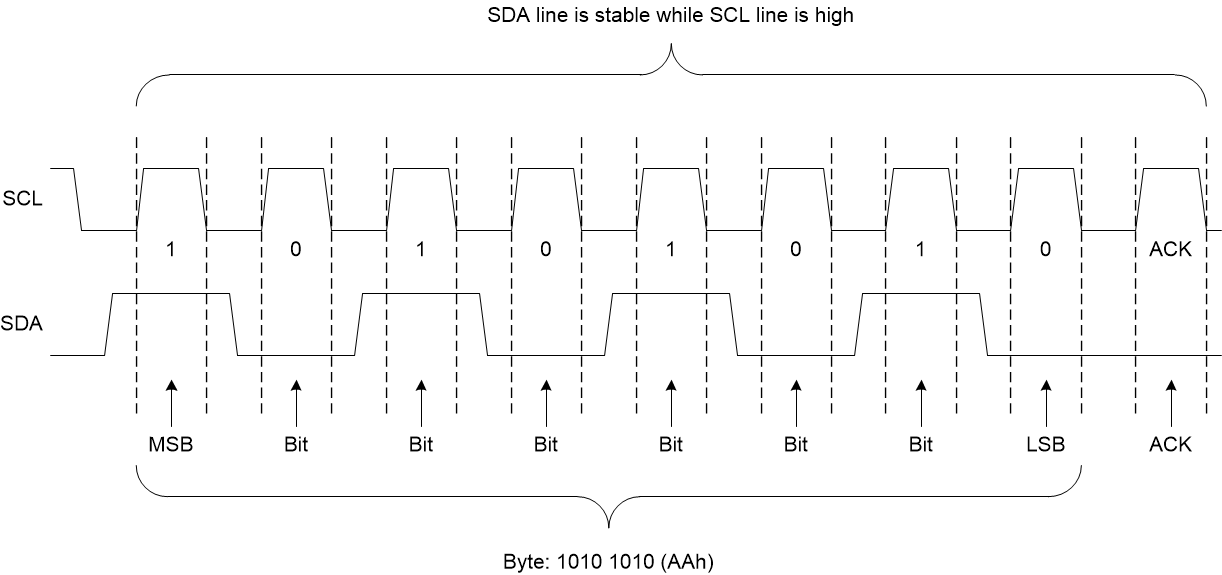SNIS233A February 2024 – July 2024 TMP110
PRODUCTION DATA
- 1
- 1 Features
- 2 Applications
- 3 Description
- 4 Related Products
- 5 Pin Configuration and Functions
- 6 Specifications
- 7 Detailed Description
- 8 Register Map
- 9 Application and Implementation
- 10Device and Documentation Support
- 11Revision History
- 12Mechanical, Packaging, and Orderable Information
Package Options
Mechanical Data (Package|Pins)
- DPW|5
Thermal pad, mechanical data (Package|Pins)
- DPW|5
Orderable Information
7.5.2 Bus Overview
The physical I2C interface consists of the serial clock (SCL) and serial data (SDA) lines. The SDA line must be connected to a supply through a pullup resistor. The size of the pullup resistor is determined by the amount of capacitance on the I2C lines, the communication frequency and I2C bus voltage. For further details, see the I2C Pullup Resistor Calculation application note. Data transfer can be initiated only when the bus is idle. A bus is considered idle if both SDA and SCL lines are high after a STOP condition or time out events (see Figure 7-7 and Figure 7-8).
 Figure 7-7 Definition of Start and Stop Conditions
Figure 7-7 Definition of Start and Stop Conditions Figure 7-8 Bit Transfer
Figure 7-8 Bit Transfer